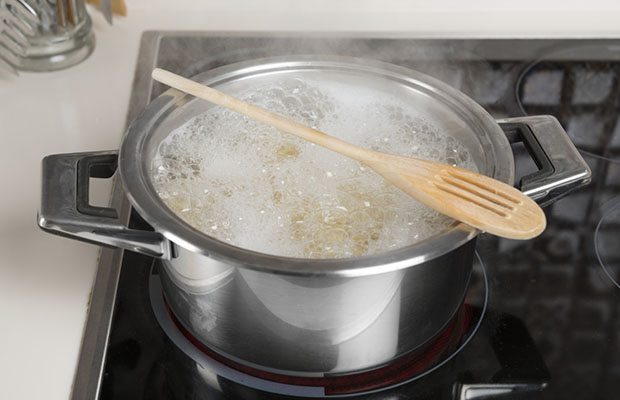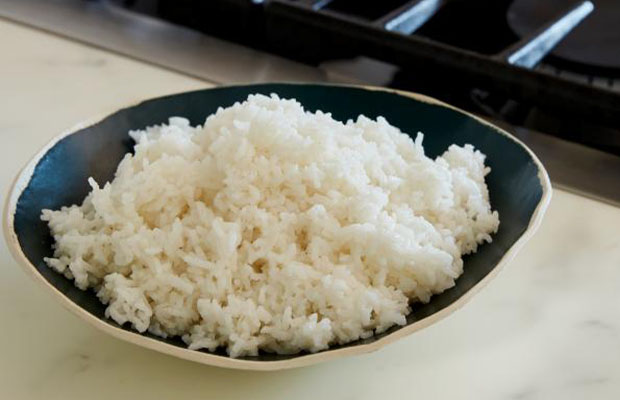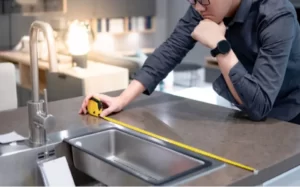Knowing how to keep rice from boiling over is important as it’s messy and sometimes hard to clean. You’ll need to double-check your water and rice measurements and follow the right procedures for the type of rice in order to stop it.
Many cuisines use rice as a base ingredient. It’s delicious, versatile, and simple to make. In this article, we’ll cover several strategies for preventing rice from boiling over as well as the causes of this problem.
Table of Contents
Causes of Rice Boiling Over
Rice grains are coated in lots of starch, much more than most people would think possible for such tiny grains. These starches form large, soapy, angry bubbles when they are cooked in water, which steam forces up and out of the pot.
The factors that lead to boiling over even when a rice cooker is used are listed below.
- The primary cause of boiling over is an excess of starch. If your rice has too much starch in it, the combination of water and foam bubbles will cause the rice to boil over.
- Excessive water: Adding too much water to the rice can also cause it to boil over the pot. To prevent rice from boiling over, use the appropriate amount of water per serving of rice.
Read More: How Long Can You Keep Rice In A Rice Cooker?
10 Methods to Stop Rice from Boiling Over
Now that we know why the rice boils over, let’s see how we can stop it from happening.
Put Oil in the Water
Theoretically, this approach works because the oil forms a barrier on the water that would prevent the foam from breaking the surface. As well as adding calories and fat, it didn’t work for me. By no means is it a lot, but if you’re following a special diet, this might not be the best option for you. We’ve covered the fundamentals of cooking oils if you’re interested in finding out which oil to use.
Put a Bamboo Spoon in Boiling Water

Although effective, this technique does not prevent the rice from constantly boiling over. When the spoon is used, the boiling water’s energy is compelled to move in an effort to warm the bamboo. It’s not ideal because, in order to keep it from overflowing, you must be there as soon as it begins to boil. Since plastic will melt and all metals will become hot, it must be made of wood.
Put a Wooden Spoon across the Pot
Placing a wooden spoon across the pot while cooking rice is another method to stop the water from overflowing. Make sure the pot is big enough for it to lay on, or that the wooden spoon is long enough. However, if the rice you are cooking contains too much starch, it will eventually boil over even though there have been reviews claiming that this method actually works.
Use a Rice Cooker
It is possible to cook rice in an Instapot or even a rice cooker. You will then need to purchase a new appliance. I’m not a fan of what Alton Brown calls “unitaskers,” or items for the kitchen that only serve one purpose. It will be useful if something is going to take up valuable room in my kitchen.
Soak Rice
One of my favorite chefs, Sohla El-Wally, taught me how to do this. Earlier than cooking, soak the rice. Swish the rice around in the water after placing it there. You need water that you can see through, so it will require several water changes. Getting rid of the starch will stop the foam from forming because the starch is what makes the rice foam.
Use a Gentle Simmer
This is something I have done repeatedly. But not enough to reduce the temperature. Once you’ve brought it to a boil, turn down the heat all the way. On my electric stove, I’ve discovered that lowering the heat to two works.
Boil One Minute
Make sure not to immediately cover the pot to prevent boiling over. A tight lid will only make things worse. Prior to covering the rice, give it a few minutes to settle.
Bigger Pot
A bigger pot will help hold everything because starch release and additional foam entering the pot are what cause boiling over. Larger saucepans work just as well as large pasta pots for this recipe.
Leave the Lid Off
The rice did not benefit from the steam produced during the cooking process, so this method didn’t work for me. Since the lid was off, the moisture from the pot evaporated.
Use a Different Rice Variety
As was already mentioned, there are numerous varieties of rice, and each variety has a unique starch composition. Try cooking a different type of rice if you are having boiling over issues to see if that makes a difference. There is less chance of a boil over with long-grain rice.
How to Keep the Rice from Sticking to the Bottom of the Pot?
It is best if you let the rice sit and rest in order to prevent it from sticking to the bottom of the bot. Here are the steps to do it:
- Once the rice is cooked, carefully remove the pot from the flame and set it down on a surface. The pot should sit for ten minutes with the lid on. Maintaining the lid on allows the rice to absorb the steam, producing cooked rice that is fluffier.
- For even distribution of the rice, use a fork to fluff the grains.
- Use a slotted spoon, which can be made of plastic or wood, to scoop the rice out.
- Enjoy your meal after the rice is served.
Conclusion on How to Keep Rice from Boiling Over
In conclusion, the rice boiling over is not something to cause great concern as it is a normal thing while cooking rice, and this is caused by a large amount of starch present in rice grains,
By using a large pot and letting the rice simmer at a lower heat temperature, as well as the methods previously mentioned, you can prevent this issue from occurring.
Now that you know how to prevent a boil-over while cooking rice, try the suggestions above and let us know how it goes.
You May Also Like: How To Keep Pizza Warm In Oven?
FAQs
How to Keep Rice from Boiling over in Microwave?
You can either stop the microwave half way through the cooking process, give it a stir then continue cooking, or pour the ingredients and water into a larger bowl before microwaving.
Why Does Rice Foam When Cooking?
When boiled in water, those starches form big, soapy, angry bubbles that steam pushes up and out of the pot.
How Do You Keep Rice from Clumping After Cooking?
Rinsing the rice removes excess starch, which is what causes clumping. To further reduce sticking, you can also add a small amount of oil or butter to your pot. All varieties of rice don’t necessarily need to be rinsed.


